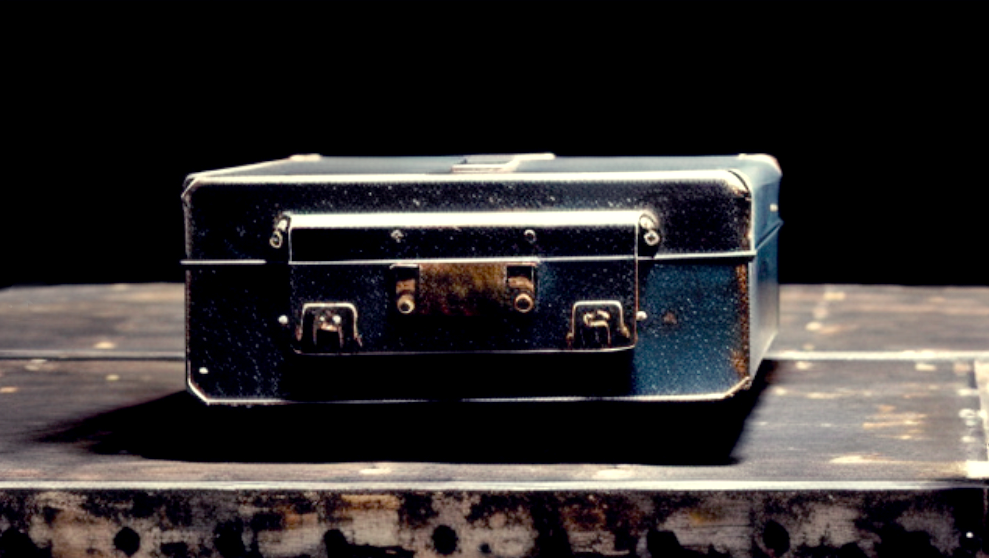Does your external hard drive need a little tin hat?
This is a post related to certain technical details that many people are concerned about. I’ve seen videos related to how to build electromagnetic screens (or Faraday boxes) at home. Some of these videos did not seem to be based on accurate information. I want to share with you what I know about this, which you may find helpful in the future.
Before jumping into it, a little disclaimer: Please be aware that installing any materials on your electric equipment or electronic device may be dangerous or even illegal, because there may be risks and hazards associated with it, such as a device getting over-heated and taking fire or a device getting accidentally short circuited. So make sure you know what you’re doing before doing anything; don’t rely on what I say here as I᾽m not an engineer, but check your information from multiple and reliable sources.
Now, there are two possible scenarios when you’d want to build an EM shield. The first is when you have an electromagnetic source that’s emitting EM waves, and you want to neutralise or minimise its effects. In this case, you basically have a device that you want to wrap up so that it won’t spread EM waves into your home or into the environment. The second case is when you have a device that you wish to protect from outside influences, and you shield it because you don’t want electromagnetic radiation to reach it. For instance, you’ve saved your important files onto an external hard disk, a USB stick, or an SD card, and you may want to protect it from external electromagnetic fields that could damage your data.
For both scenarios, you need to build a metal shield in the form of a box, a bag, an envelope or something similar.
There are three types of fields that you may want to screen off: Electric, magnetic, and electromagnetic. The third type is a combination of the first two.
Various metals can act as shields for various types of fields. Basically, any metal foil or plate will filter off electric and electromagnetic fields either completely or partially (depending on the type of the material, its width and its shape). This means that you can use tin foil that you have in the kitchen to make a box that will work as a screen. The thikness of the shield is important, so creating several layers of foil will increase its effectiveness.
Here comes the tricky part. Tin foil or aluminium foil will screen off electric fields, hence it will also block those electromagnetic waves that are typically used with communication devices, such as smartphones, wireless, radio, or TV. However, tin foil cannot shield off magnetic fields. Why is that important? Well, in the unlikely event of, say, a powerful solar storm, strong magnetic fields can erase data from our computers and storage devices. We rerember that Mr Schwab and his company have warned us that the next big thing might be related to something affecting our computers and the Internet. So one cannot rule out the risk that a magnetic storm be created by malevolent people using existing technologies. If a magnetic storm takes place, then a shield made of tin, aluminium, or lead will not work. What you need is a shield made of ferromagnetic materials, such as iron, ferrite, or steel.
You may find in your local store various types of metal boxes, cans or cases — you just need to make sure they are made of a ferromagnetic metal. Kitchenware departments may be a good source of inspiration. Also, make sure there are no holes or open spaces in it. You want your shield to protect your device on all sides. If you found a metal box that looks thin, the shield may not be very effective. A good solution is to use several boxes and place them one inside another, like a Russian doll.
How do you know if a particular metal box can shield off magnetic fields? The simplest way to chek it is to use a magnet, such as the ones that you have on your fridge. Just see if the magnet sticks to your shield. If it doesn’t, that’s not what you need.
Foils made of ferromagnetic metals are rather difficult to find. You may actually find steel fabric. That should work, too, but only to some extent. The holes in the fabric permit electromagnetic waves to get in. This translates into the frequency of the waves: High frequency radiation will be able to cross it. So the smaller the holes, the higher the frequency that gets blocked. And you don’t know what frequencies they use. Apparently, in fifτh-gen systems they use high frequencies, which means that’s radiation that can get through very tiny holes. At the same time, be aware that fine metal fabric will not be very thick, which will reduce the effectiveness of the shield. So it’s actually a trade-off here, and you may want to create multiple layers of fabric to make your shield thicker.
Concerning the second scenario, there is another detail that you need to consider when protecting your backup storage device from being erased by magnetic fields. Let’s presume that a strong magnetic field has wiped out all the hard-disks, all the cards, and all the memory sticks in your home; or in the whole world. The hard disk that you’ve stored in your metal box is just safe, and you can use it, hurray. But how will you read your data? If all the computers in the world have been wiped out, it means that everything, I mean everything, including the operating system of the computers, has been wiped out, and they can no longer boot up. So ideally, you need to place in your safe box not just your storage devices, but also a computer or a tablet. Which means that your shielded box needs to be large enough to accomodate your laptop. Perhaps a smartphone with a micro-SD card in it would be a good option.
The good old CDs and DVDs might be less vulnerable to magnetic storms compared to hard disks, cards, and memory sticks. But we all rushed to throw away our old equipment that could read and write that, because we were told that it was outdated. A Linux bootable DVD might work if your laptop’s system has been erased — though I’m not so sure about that either: If your computer’s BIOS was wiped out, too, then it won’t be able to boot at all.
At the end of the day, I’m afraid that the only really safe way to keep a document protected from magnetic or electromagnetic interferences is by printing it out on paper. As always, less is more; less technology is more in terms of safety.


